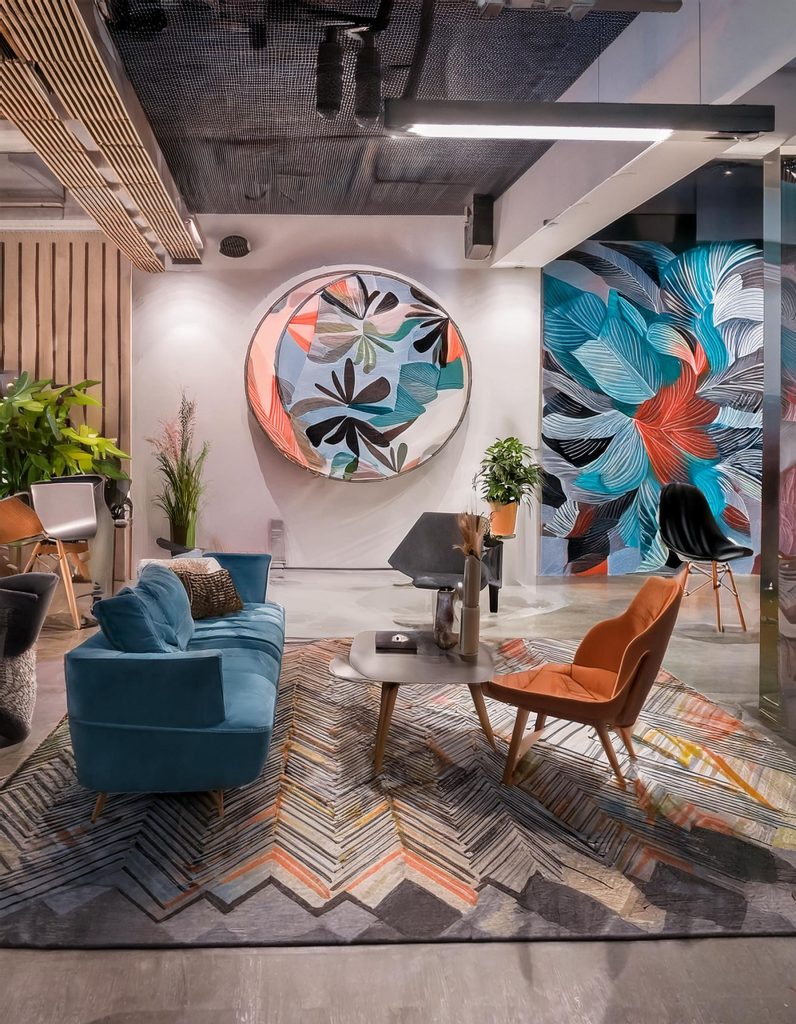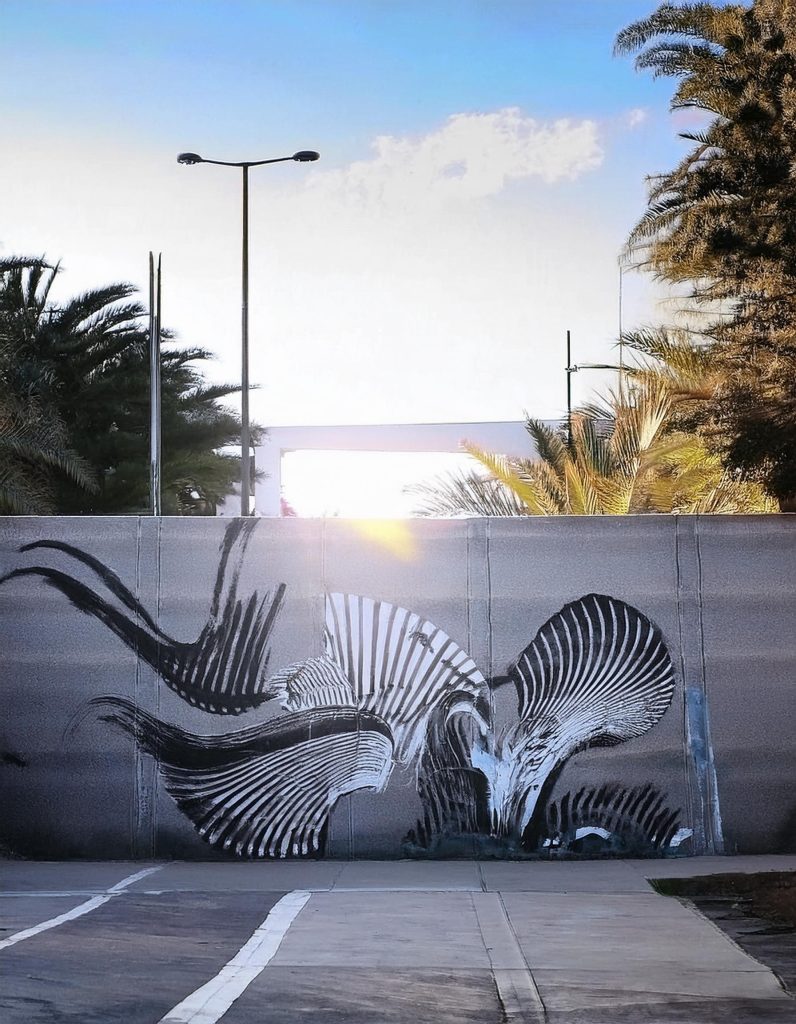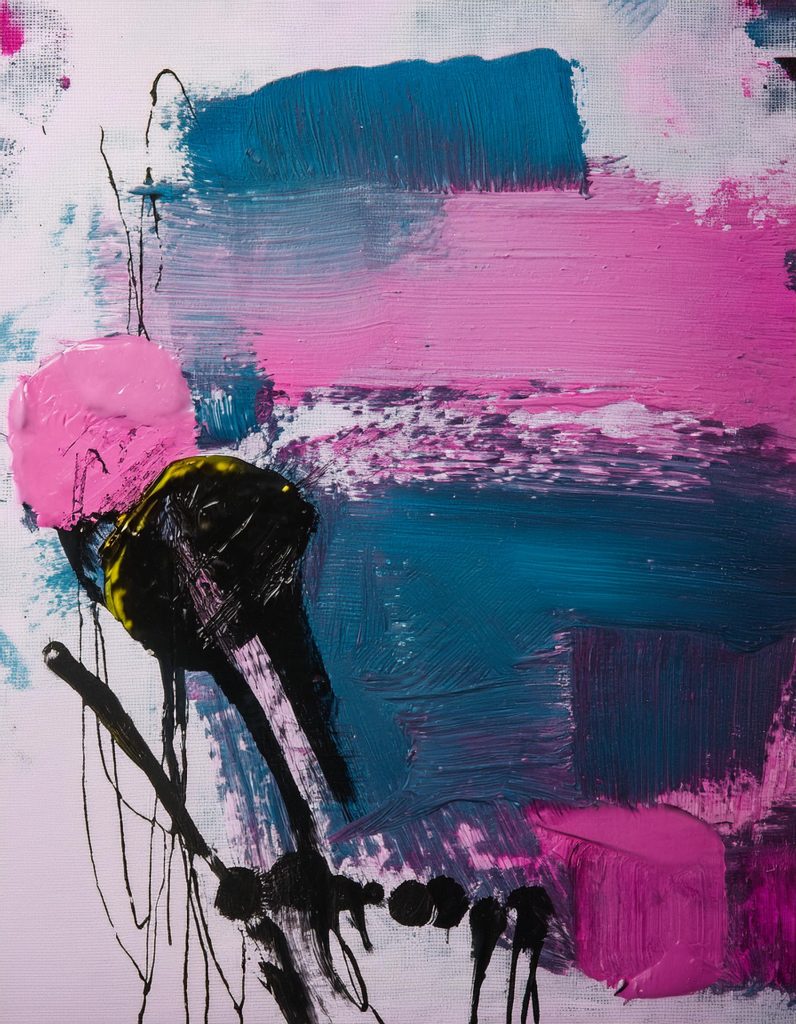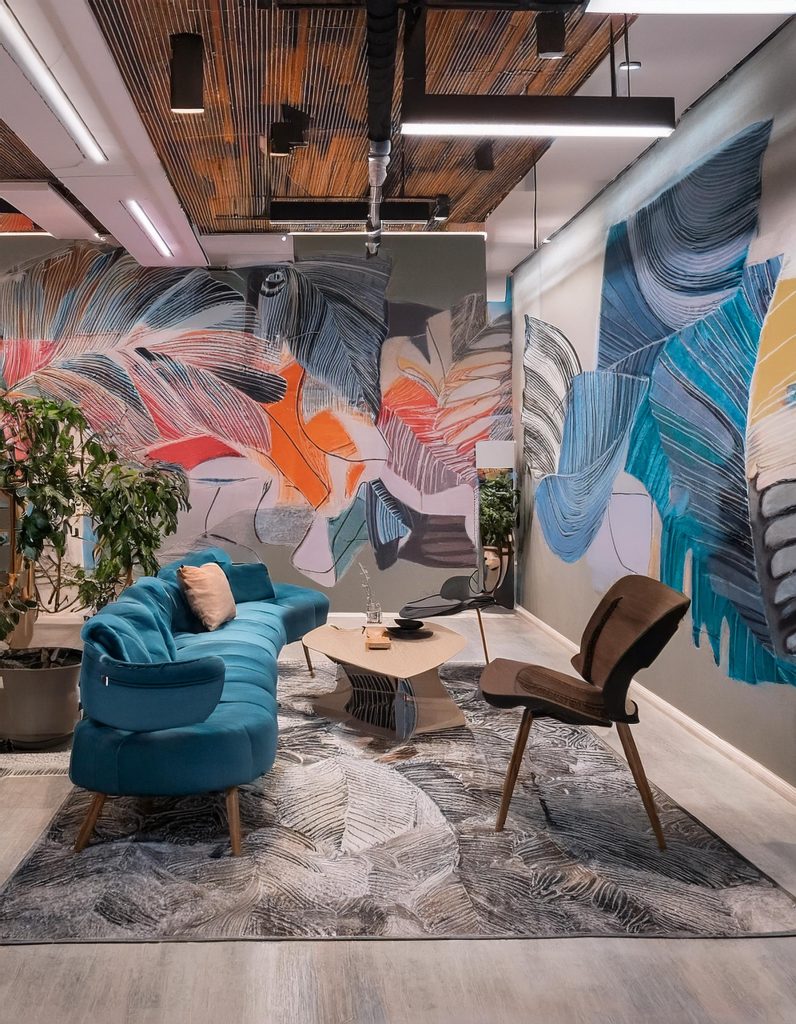In social children’s homes (MECS) and medico-educational institutes (IME), the physical environment is of crucial importance for the well-being and development of children, but also for that of caregivers, educators and families. The visual aspect of the space, whether it’s wall decorations, artistic frescoes or adapted signage , can promote a serene and stimulating atmosphere, where everyone feels confident. Investing in the creation of harmonious, colourful and meaningful decorations is not only an aesthetic approach: it is also an act of prevention, support and accompaniment. The children and adolescents who attend these structures, often in delicate contexts — whether they are weakened by illness, disability or social difficulties — are particularly receptive to their environment. Poorly chosen colours, confusing signage or walls devoid of reassuring elements can increase their feeling of insecurity, while on the contrary, a warm decoration will develop their sense of belonging and well-being.
In addition, the role of frescoes and decorations is multiple: these elements can transmit values, tell stories, or underline the educational and therapeutic project of the establishment. For example, painting a mural representing diversity, friendship or solidarity can support the messages that educators and caregivers convey on a daily basis. Beyond the purely decorative aspect, these graphic and pictorial creations then become real educational tools, inviting discussion and reflection. Signage, on the other hand, allows everyone to easily find their way around the premises. In an IME or a children’s home, they benefit from being playful, colourful, adapted to different levels of understanding and possibly accompanied by evocative pictograms. Far from being secondary, they have a direct influence on the autonomy of the children and on the fluidity of movement within the school.

In short, decoration, frescoes and signage form an essential triptych to create a positive and meaningful atmosphere.In this article, we will detail the interest and advantages of implementing the most beautiful decorations and frescoes, highlighting their impact on each actor involved: children, caregivers, educators and families. We will also discuss the colour of the year 2025, in order to shed light on future trends.
1. The importance of a stimulating environment : mural? Floor decoration? decorative signage?
Children, especially those with special needs or going through medical, psychological or family difficulties, are very sensitive to their living environment. Colours, light, shapes, images, everything that makes up their visual environment, have an influence on their mood, their ability to concentrate, their sense of security and their creativity. Thus, a stimulating environment can help improve their self-esteem, promote learning and encourage collaboration between peers.
“Children’s homes of a social nature (MECS) and medico-educational institutes (IME), the great artistic revolution!”
In children’s homes, where children evolve on a daily basis, careful decoration reinforces their sense of belonging. Murals can tell stories that echo their experiences, illustrate positive values, or present imaginary worlds that are conducive to escape. Signage, when integrated in a creative and playful way, allows children to develop their autonomy, in particular by easily identifying the different areas (playroom, activity room, dormitories, refectory, etc.). They can also be essential to reassure the youngest or those with cognitive disorders, by offering them concrete and recognizable landmarks.

For the IMEs, the stakes are even higher, because some children or teenagers present disabilities or disorders that make them particularly sensitive to sensory solicitations. Decorations and frescoes must therefore be designed to respect the rhythms and specific needs of each person. Too much stimulation, for example, can cause stress or restlessness in some autistic children. Conversely, a setting that is too neutral, lacking colors or stimulating elements, can hinder motivation and curiosity. Finding the right balance is paramount, and this often involves collaboration between artists, educators, caregivers and psychologists.
2. The benefits for children and adolescents
- Emotional well-being : Warm and harmonious colors are known to bring a sense of security and comfort. Children exposed to suitable shades, soothing settings and positive murals develop stable emotions and a sense of confidence more easily.
- Cognitive stimulation : Decorations can be designed to encourage awakening and curiosity. For example, frescoes depicting scenes from nature, animals or famous characters from fairy tales help to enrich vocabulary, stimulate the imagination and raise questions.
- Self-expression and creativity : When involved in the design or realization of certain decorative elements, children have the opportunity to express themselves in an artistic way. This can be beneficial for their personal development and self-esteem, giving them the satisfaction of bringing their personal touch to the facility.

- Learning values : Murals that convey messages such as solidarity, tolerance or respect for differences can have a significant impact on the child’s identity construction. They are visual reminders that are part of everyday life.
- Landmarks and autonomy : Clear and adapted signage allows the child to evolve independently in the premises, which reinforces his or her sense of competence. Pictograms, colour codes and directional arrows are all tools that reduce stress and promote self-confidence.
In short, offering children a warm, colourful environment adapted to their needs contributes to their psychological balance and their openness to the world. Each decorated wall, each fresco and each signage is transformed into educational and therapeutic support.
3. The advantages for caregivers in MECS and IME
Caregivers — nurses, doctors, psychologists or any other member of the medical staff — play a decisive role in the care pathway and support for children. A visually pleasing environment has a positive impact on their own well-being and emotional availability, which is a prerequisite for providing quality support.
- Stress reduction : Caregivers, faced with the child’s suffering or discomfort, can also be weakened. Working in an environment where colors, decoration and signage are designed for peace and efficiency can help reduce their stress levels.
- Facilitation of interventions : Clear signage makes the circulation in the corridors and the various treatment rooms fluid. Caregivers save time and peace of mind by knowing exactly where they are, and by easily guiding the child or their loved ones.

- Strengthening the sense of pride and involvement : Participating, even indirectly, in a decoration or design project that highlights the needs of the children can strengthen the motivation of the caregivers. They feel supported by the institution and can better get their recommendations across.
- Better relationship with the child : When murals or decorations arouse an interest in the child, it can facilitate communication during difficult times. For example, a child stressed by a treatment may be distracted or soothed by the presence of a reassuring visual. Caregivers can then rely on these elements to establish a more natural dialogue.
In short, the quality of the environment is not just a detail; it directly influences the quality of work and the emotional availability of health professionals, for the final benefit of the child.
4. The benefits for MECS and IME educators
Educators, whether they work in a children’s home or an IME, have the mission of supporting children in their learning, socialization and overall development. They are often called upon to lead workshops, manage daily life and ensure the educational follow-up of each child.
- Pedagogical support : Frescoes and decorations can be concrete supports to stimulate oral expression, vocabulary, or storytelling. Educators can take advantage of these visuals to introduce new concepts or encourage children’s participation.
- Enhancement of common projects : Organizing a mural painting workshop or the creation of small decorative elements often involves collective reflection. The children, guided by the educators, learn to work in teams, to share tasks and to value each other’s contribution.

- Foster positive discipline : An attractive and personalized setting can encourage respect. Children understand that places that have been cared for, decorated and embellished have a value, which must be preserved. This can reduce, in part, incivility or damage to equipment.
- Strengthening the mediation role : Educators often act as mediators in conflicts between children. The decorations or frescoes can contain visuals illustrating peace, mutual aid, mutual respect. These illustrations offer concrete examples to open up a dialogue on these themes.
Ultimately, for educators, having a rich and friendly learning environment is a valuable asset. The decorative elements and signage are fully integrated into their practices and reinforce the positive effect of their interventions.
5. Benefits for families
Families have an essential role in accompanying and supporting children, whether they are parents, siblings or relatives. When they go to a children’s home or an IME, they are sometimes anxious, worried about leaving their child in an environment that they do not always know well.
- Reassuring welcome : A warm, colourful and adapted decoration gives a first positive signal to the family who arrives on the premises. She then feels confident, reassured to entrust her child to an establishment that pays attention to the living environment.
- Moral support : Knowing that the child evolves in a well-thought-out universe, where each fresco and each panel has been thought out for his or her well-being, can be a relief for families. They see it as proof of a humanistic approach and a deep respect for the person.

- Ease of orientation : Parents, sometimes in a hurry or stressed, appreciate easily finding the educator’s office, the infirmary or the activity room thanks to clear signage. This helps to make visits more serene and to facilitate communication with the staff.
- Strengthening the family bond : Some decorations can include photos or creations made jointly by the children and their loved ones. Such initiatives promote a sense of belonging and create a bridge between the child’s life in the institution and his or her family life.
In the end, the well-being of families influences the quality of the relationship they have with the educational and medical team, and in turn the well-being of the child himself. A well-cared for, trusting environment allows you to build or consolidate positive relationships.
6. Decorations, frescoes and signage: what choices?
Each children’s home or IME is unique. Its identity is built around its educational project, the particularities of the public welcomed, but also its architecture and history. Before embarking on the implementation of decorations, frescoes or signage, it is therefore crucial to carry out a global reflection.
- Needs analysis : What are the age groups concerned? What are the specificities of the children welcomed? Are there autism spectrum disorders, visual or hearing impairments? These elements influence the choice of colours, textures, contrasts and patterns.
- Participatory design : Involving children, educators, caregivers, and sometimes even families in the design process can be a very rewarding process. It creates a sense of collective pride and leads to achievements that make sense to all.

- Selection of materials : In an IME as in a children’s home, the safety and resistance of the materials are paramount. Paints must be non-toxic, the substrates easily washable or disinfectable, etc.
- Balance between aesthetics and functionality : The murals must be beautiful, but also suitable for the eyes of children. Signage must be harmoniously integrated into the overall décor, while remaining visible and legible.
The choice of graphic style (rather figurative, abstract, colorful or sober) will depend on the desired atmosphere and the advice of professionals (artists, graphic designers, occupational therapists, etc.). The main thing is to adapt each element to the reality of the establishment.
7. The role of artists, designers and design professionals
Calling on artists or designers who specialize in the field of medico-social or early childhood establishments can make all the difference. Indeed, these professionals are familiar with the specificities related to children with disabilities, safety standards and the budgetary constraints frequently encountered. This is precisely the know-how of our metamorphoze workshop.
- Conceptual approach : An experienced artist or designer will be able to propose a global, coherent concept, integrating not only the aesthetics but also the functional dimension of the space. He will be able to advise on the layout, the colour palette, the typography and the signage.
- Technical skills : Large frescoes, for example, require special know-how in preparing walls, choosing paints and finishing. Similarly, for signage, it may be necessary to print professional signs or design embossed elements.

- Creativity and personalization : A professional knows how to deal with the ideas and constraints of each person to offer an original result, specific to the establishment. He can design unique decorations, inspired by the values of the IME or the children’s home, and likely to touch children.
- Follow-up and maintenance : Once decorations and signage have been installed, care must be taken to ensure their durability and maintenance. Professionals can train staff for proper cleaning or intervene for touch-ups in the event of damage.
The collaboration with specialists makes it possible to obtain a result that is up to the challenges, where aesthetics, pedagogy and safety are in tune.
8. Example of a development process
Let’s imagine that a children’s home decides to completely rethink its reception hall, its main corridors and its collective activity room. The management wants to create a playful, warm and educational universe, capable of highlighting the children’s creations.

- Preliminary analysis : The management team meets with a graphic designer and an occupational therapist to discuss the specificities of the audience: children aged 3 to 10, some of whom have motor skills and spatial orientation difficulties. They validate the idea of a plant and animal atmosphere to promote curiosity and calm.
- Children’s participation : During several workshops, the children make drawings of animals, flowers and landscapes. The artist is inspired by their creations to sketch a fresco that will cover a section of wall in the hall. Some drawings will also be reproduced in the form of large-format stickers.
- Setting up signage : The corridors have signs indicating each room. The pictograms are simple, with contrasting colors to improve readability. The names of the rooms (e.g. “Butterfly Room”, “Colibri Room”) are associated with small illustrations in coherence with the plant world.

- Final decoration : In the activity room, a shade of green, blue and yellow brings brightness. The frescoes depict a scene of a tropical forest, populated by smiling animals. The furniture has been repainted or covered with coloured covers. The children proudly discover their drawings integrated into the décor.
- Awareness and maintenance : The educators organise a time of exchange with the children to explain to them how to take care of their new walls and where to find the different rooms. A booklet is given to families so that they can familiarize themselves with the graphic universe.
This type of approach, combining consultation, creation and evaluation, perfectly illustrates the benefits of such a project for the entire educational community.
9. The Color of the Year 2025
Each year, major paint and design institutions or brands identify a “color of the year,” which reflects emerging trends, societal developments, and collective aspirations. For 2025, many observers of the design world anticipate a strong trend around a particular shade: a soothing blue-green, sometimes referred to as “deep celadon green”.
This colour, halfway between the freshness of green and the serenity of blue, promises to be a privileged choice to infuse a calm, optimistic and modern atmosphere. It recalls natural spaces (oceans, tropical forests) and evokes a need to return to the roots, to reconnect with nature and with oneself. In places such as children’s homes or IMEs, this blue-green can be used in touches or in a light flat area to highlight an accent wall, highlight certain key areas or create subtle and reassuring signage.
Of course, the choice of the colour of the year must be made taking into account the specificities of each establishment: it is not a question of repainting everything in blue-green overnight, but rather of integrating this trend in a thoughtful and aesthetic way, harmonising it with the colours already present and the needs of each person.
“Social children’s homes (MECS) and medico-educational institutes (IME), a new look at interior design and architecture”
10. Practical tips for implementation
- Listen to users : Hold meetings or workshops to gather the wants, needs, and ideas of children, caregivers, educators, and families. This can be in the form of questionnaires, brainstorming sessions, or open discussions.
- Start with small projects : Instead of renovating everything at once, it can be a good idea to tackle a hallway, room, or reception area first. This makes it possible to assess the impact of the changes and adjust the approach if necessary.
- Consider light : Before choosing a color palette, observe how natural light and artificial lighting diffuse into the space. A color may seem soothing in one well-lit area, but dark or stuffy in another.
- Focus on the quality of materials : Investing in paint and supports that are durable, easy to clean and respectful of health (solvent-free paints, eco-labels) is essential in an environment frequented by children.

- Train staff : If you plan to create murals or review signage, don’t hesitate to train a few staff members or volunteers in basic techniques. This can help maintain and renew the decorations without having to systematically call on a service provider.
- Communicate about the project : Whether via social media, the school’s website, or an internal newsletter, keep families and the public informed of the project’s progress. This creates a positive dynamic and values everyone’s work.
- Evaluate and adjust : Once the decorations, murals and signage are in place, take the time to collect feedback and observe the real impact on the children. Some elements can be modified, improved or strengthened to better meet the objectives.
Implementing the most beautiful decorations, frescoes and signage in a children’s home or an educational medical institute is not only a question of aesthetics: it is a concrete commitment to the well-being, fulfillment and safety of all. First of all, the children find a reassuring, inspiring space adapted to their needs. Caregivers and educators benefit from a framework that facilitates their daily work, allowing them to gain in emotional availability, efficiency and professional satisfaction. Families, for their part, are reassured to know that their loved ones are living in a place designed to promote their development and comfort.

At the heart of these initiatives is the idea that the visual environment is a carrier of meaning and emotions. The frescoes, decorations and signage are no longer simple accessories, but partners in the educational and therapeutic project. They tell a story, convey values and help everyone to find their way around, express themselves and progress. In addition, in 2025, the trendy colour that is emerging – this soothing blue-green – can perfectly meet this desire to offer a soft, natural and serene setting, conducive to relaxation and creativity.
Ultimately, the implementation of a successful development project requires consultation, coherence and perseverance. It is a collective project that mobilizes children, care teams, educators, families, artists and designers. But the result is well worth it: a place where everyone, regardless of age or situation, can feel welcomed, valued and accompanied, in an environment that is thoughtful to promote awakening, healing and joy of life.
Benefit from all the services of the group and the Métamorphoze workshop. + 280 projects in Europe.
- Planning and Layout Department
- Monumental Fresco Factory
- Design and Artistic Signage Factory
- Factory of Custom Window Stickers
- Signage design office
- Sculpture and hand-painted canvas manufacturing division
- Writing and Poetry Centre
The Metamorphoze group is also a centre of complementary experts with Signalétique.art and Vitrophanie.art

